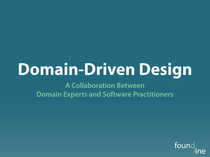A handful of communities across the United States currently have access to gigabit-per-second (1 Gbps) Internet speeds. This super-fast connectivity is only possible with a fiber-optic infrastructure and a fiber-to-the-home (FTTH) deployment. Existing coaxial cables and telephone lines can’t even come close to providing gigabit-per-second bandwidth. But why does gigabit-per-second Internet speeds (and fiber-to-the-home) matter? A recent post on The Economist’s blog had this to say about fiber-to-the-home and gigabit-per-second Internet speeds:
There are limits, though, to the benefits to a fast connection. Often, they can end up demonstrating just how (relatively) slow the rest of the net is becoming. Cyrus Farivar, a writer for the tech website Ars Technica, traveled for a few days to Kansas City, Kansas, for a stay in one of the Homes for Hackers set up by a local entrepreneur to boost the city as a place to move to work and start companies. Mr Farivar’s first posting explained that despite having a purported 1,000,000,000 bits per second as his disposal (and somewhat fewer in practice), he found it hard to fill the pipe.
The above quote describes the early stages of a classic technology adoption lifecycle.

This bell curve describes the adoption lifecycle of a given technology. First come the innovators (2.5%), followed by the early adopters (13.5%), then the early majority (34%), the late majority (34%), and finally the laggards (16%). The innovators love technology and will be first to use the new technology, even if it’s still in the lab. The early adopters represent the first successful commercial use of the new technology. The early majority represents the technology breaking out of a niche and into the mainstream. The shift from early majority to late majority represents the technology becoming commonplace and standard. At some point, the laggards have no choice but to use the technology.
Gigabit-per-second technology is currently in the innovators phase of the technology adoption lifecycle. Only a handful of communities in the United States have access to gigabit-per-second Internet speeds. There are no statistics available on how many people within those communities have signed up for gigabit-per-second service. Successful commercial uses of gigabit-per-second bandwidth are practically non-existent at this point.
Fiber-to-the-home technology is currently in the early adopters phase. Fiber-to-the-home has been a commercial success but has not yet reached the mainstream. The Fiber To The Home Council Americas reports that nine million North American households are connected directly to fiber-optic networks. With over 115 million households in the United States alone, this puts fiber-to-the-home technology adoption well within the early adopters threshold but clearly not yet in the early majority phase. Within urban areas, one might see fiber-to-the-home reaching an early majority phase, yet there is very little availability of fiber-to-the-home in rural areas due to the high costs of deployment.
This brings us back to the question, why does gigabit-per-second Internet speeds (and fiber-to-the-home) matter? If you live in a community with access to gigabit-per-second Internet speeds, why should you care? If your community doesn’t yet have access to gigabit-per-second Internet speeds but does have fiber-to-the-home, why should you care? What are the advantages of your community being an innovator or an early adopter? Why not just wait for the technology to reach the early majority or late majority phase? Or, why not just be laggards and wait until you have no choice?
The main answer to these questions should be obvious by now. If one accepts that gigabit-per-second bandwidth and fiber-to-the-home technology are on a trajectory towards mainstream adoption, then you will eventually have to get on board as a laggard. Wouldn’t it be better to get on board during the early adopters phase (or maybe even during the innovators phase)?
As with Moore’s Law, bandwidth speeds are ever increasing. Moore’s Law correctly predicted that processing power would grow by 60% every year. In 1998, Nielsen’s Law of Internet bandwidth correctly predicted that bandwidth for high-end home users would grow by 50% every year. Since processing power is increasing faster than bandwidth speeds, Nielsen observed that user experience is ultimately bound by bandwidth, not processing power. Just as computers will and must get faster, bandwidth will and must get faster. Extrapolating from Nielsen’s Law, I predict that gigabit-per-second Internet speeds will reach the early adopters phase within five years and the early majority phase within ten years.
It takes innovators using a new technology in order to discover its first successful commercial use and move the technology to the early adopters phase. Communities with gigabit-per-second Internet speeds will be the incubators for these innovators and the place where successful commercial uses are discovered. These communities have much to gain by fostering innovators and early adopters as they discover and refine commercial uses of this technology.






